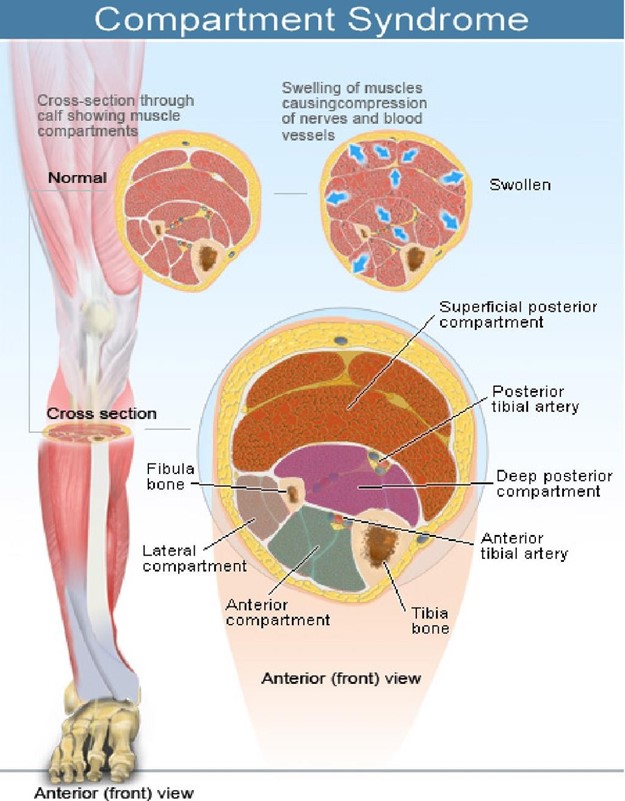A nurse is assessing for early signs of compartment syndrome for a client who has a short-leg fiberglass cast. Which of the following findings should the nurse expect?
Intense pain with movement
Bounding distal pulses
Erythema of the toes
Capillary refill less than 2 seconds
The Correct Answer is A
Compartment syndrome is a condition in which increased pressure within a confined space compromises blood flow and tissue perfusion, leading to ischemia and necrosis. It can occur after trauma, fracture, or casting of an extremity. The early signs of compartment syndrome include intense pain with movement that is not relieved by analgesics or elevation, paresthesia, pallor, and decreased sensation and motor function of the affected limb. The late signs include absent distal pulses, cyanosis, coldness, and paralysis. Therefore, option A is correct.

Nursing Test Bank
Naxlex Comprehensive Predictor Exams
Related Questions
Correct Answer is B
Explanation
Weight gain 1.1 kg (2.4 lb) in 24 hours indicates fluid retention and possible volume overload, which can worsen kidney function and cause complications such as hypertension, pulmonary edema, and heart failure. The nurse should report this finding to the provider and monitor the client's vital signs, fluid intake and output, and electrolyte levels.
Creatinine 0.8 mL/dL is within the normal range for adults and does not indicate kidney impairment. Peripheral pulses 2+ bilaterally are normal and do not suggest any vascular problems. Urine specific gravity 1.045 is slightly high but not abnormal for a client with acute kidney failure, as it reflects the reduced ability of the kidneys to dilute urine.
Correct Answer is B
Explanation
A monthly calendar can help the client with Alzheimer's disease to orient to time and date and reduce confusion and anxiety. The nurse should encourage the family to use simple and clear reminders and cues to assist the client with daily activities and routines.
Covering electrical outlets with tape is not necessary and may pose a fire hazard. Keeping the client's bedroom dark at night may increase the risk of falls and injuries. A large-face clock may be helpful, but not as much as a calendar.

Whether you are a student looking to ace your exams or a practicing nurse seeking to enhance your expertise , our nursing education contents will empower you with the confidence and competence to make a difference in the lives of patients and become a respected leader in the healthcare field.
Visit Naxlex, invest in your future and unlock endless possibilities with our unparalleled nursing education contents today
Report Wrong Answer on the Current Question
Do you disagree with the answer? If yes, what is your expected answer? Explain.
Kindly be descriptive with the issue you are facing.
